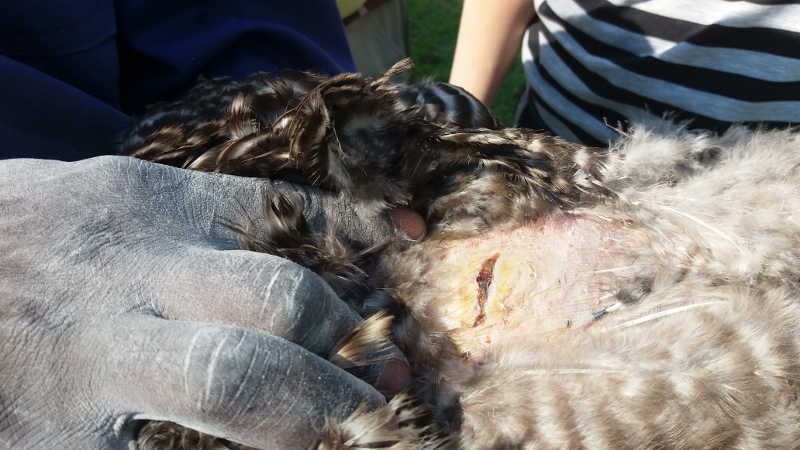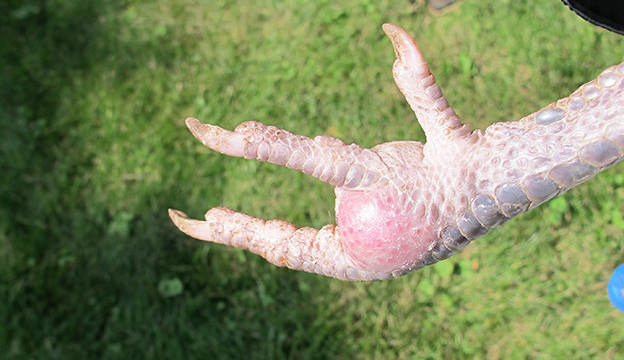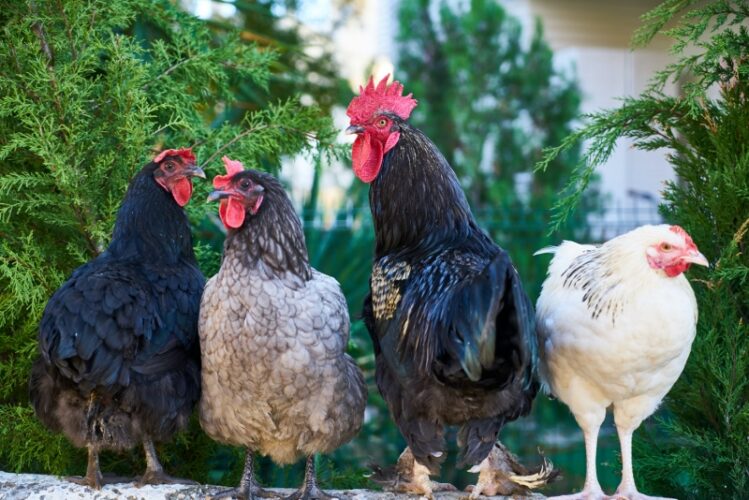Your flock is good at hiding any illness, so a regular chicken health check is necessary. A good way to monitor flock health is to spend time with your chickens, preferably every day. When you very familiar with your poultry you will notice small tell-tale signs that all might not be well.
Here are the things that you must consider. You might need to do further research of you discover a problem.
Eyes
Your chicken’s eyes should be clear, bright and fully open. Check that there is no discharge or puffiness.
If the eye has an unusual shape or has turned grey, the hen may have Marek’s disease. Cloudiness probably means that the chicken has cataracts.
Comb and wattles
A healthy cock or hen will have a strong red comb, although younger chickens have paler ones. The comb should look fleshy, full, soft and supple. There should be no signs that the chicken has been attacked by the others. If they are bleeding, remove them from the flock.
Grey, white or dark scabs could be signs of fowl pox.
Droppings
The droppings of a healthy chicken are firm, some shade of brown, with a white cap. The colour can be affected by what the chicken is eating, especially if it is free range.
Sometimes the faeces are sloppy. However, very runny manure might be a sign of Coccidiosis.
Also examine the droppings for worms, as some of them are visible to the naked eye. Occasional specks of blood in the manure are probably not of concern, but if there is really noticeable bleeding further examination is important.
Skin

In order to examine the skin, you will have to pick up the chicken. Hold it comfortably under one arm. Lift the wings to check the skin underneath. Also examine the skin around the anus.
If there are any sores or bleeding, deal with it immediately, otherwise the others will start pecking her. She might also peck at herself, causing infection as well as pain.
Feathers
You are looking for bright, glossy feathers, with no bald patches. If the hen is not preening or the feathers look dull and unkempt, it is probably a sign that there is something wrong.
Plucking the feathers might be a symptom of mites or lice.
Know the signs that the hen is moulting, so that you don’t panic unnecessarily.
Good quality feed results in healthy feathers.
Crop
The crop is found at the bottom of the chicken’s neck. This is where food is held before it is passed on for digestion. Feel the crop. Depending on the time of day, it should feel slightly swollen and firm. If it is hard and the area feels hot the crop will be clocked with impacted food. If it feels squishy and the breath smells of sour milk, the chicken might have sour crop. Both conditions must be attended to.
Feet and legs
When you check chicken health, the feet and legs sometimes give clues. The scales on the legs and feet should be smooth. If they lift you might have a problem called scaly legs. Healthy feet are free of compacted mud, cuts or oozing. Dark patches could mean bumblefoot.

Click here for more detailed information on problems with feet, claws and legs.
Weight
Your chicken’s weight can indicate her general well-being. Pick her up and check around her keel. This is the bone that runs down the centre of her chest.
If there is a great deal of flesh around it she might be overweight. This can be problematic and might even lead to sudden death syndrome.
When the keel bone sticks out the chicken is too thin. This might indicate a health problem. It could also be a social problem. Observe the flock to be sure that each individual gets access to food. Sometimes bullying prevents this.
Egg production
A drop in egg production might be a sign of illness. Irregularly shaped eggs can also indicate a problem.
For more on poultry click here.
To receive all our notices and each edition of SA Smallholder Digital Magazine register for free here.

